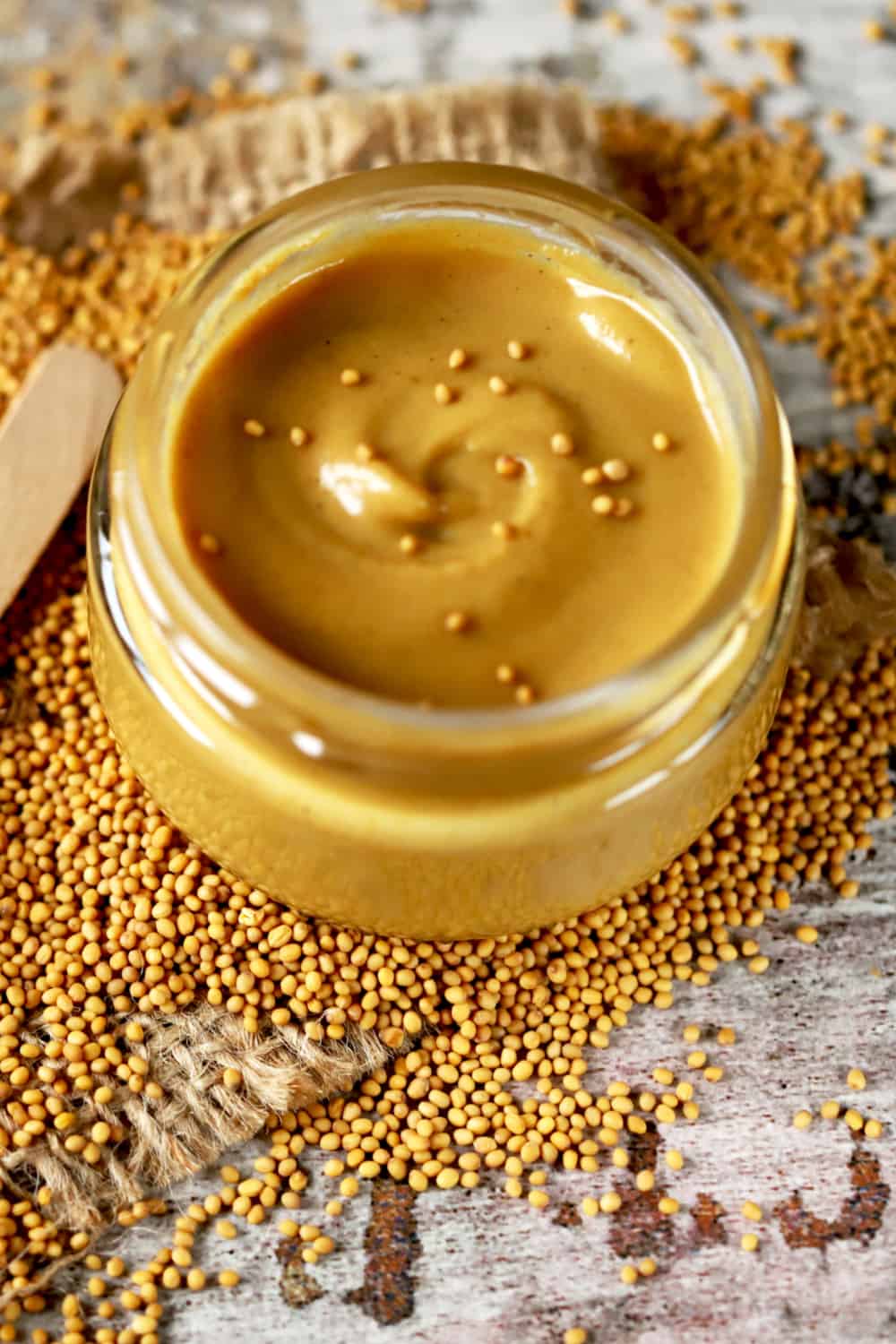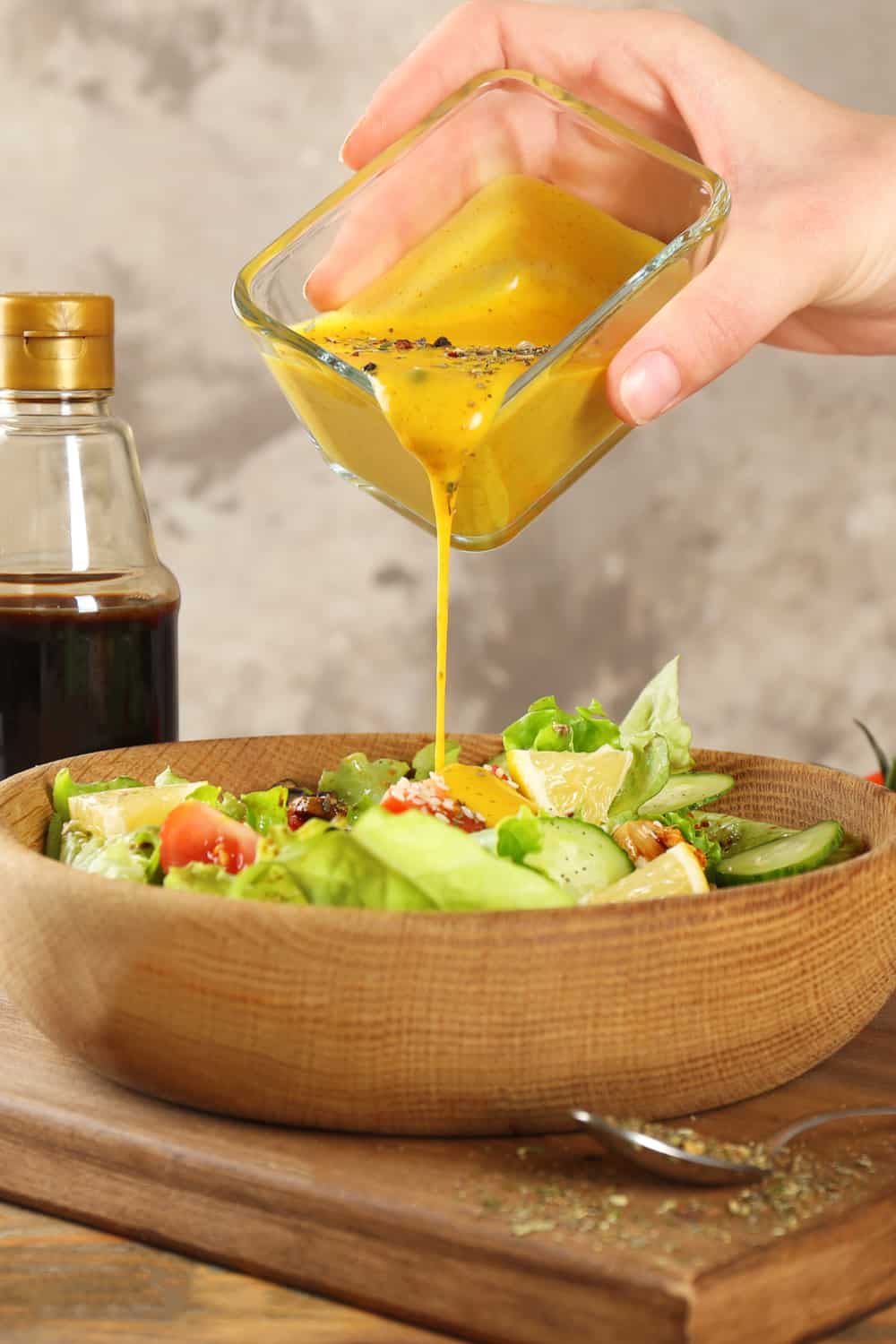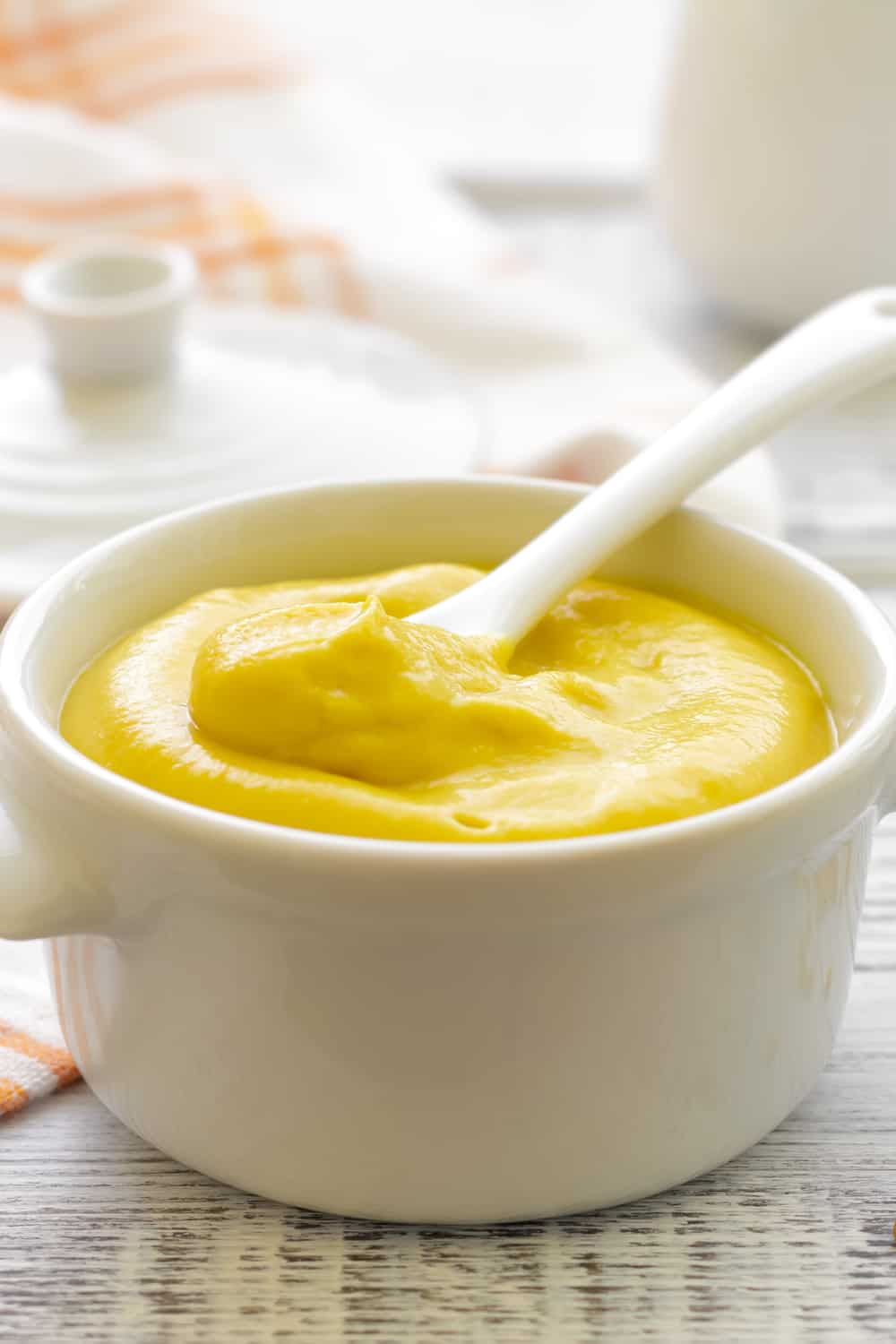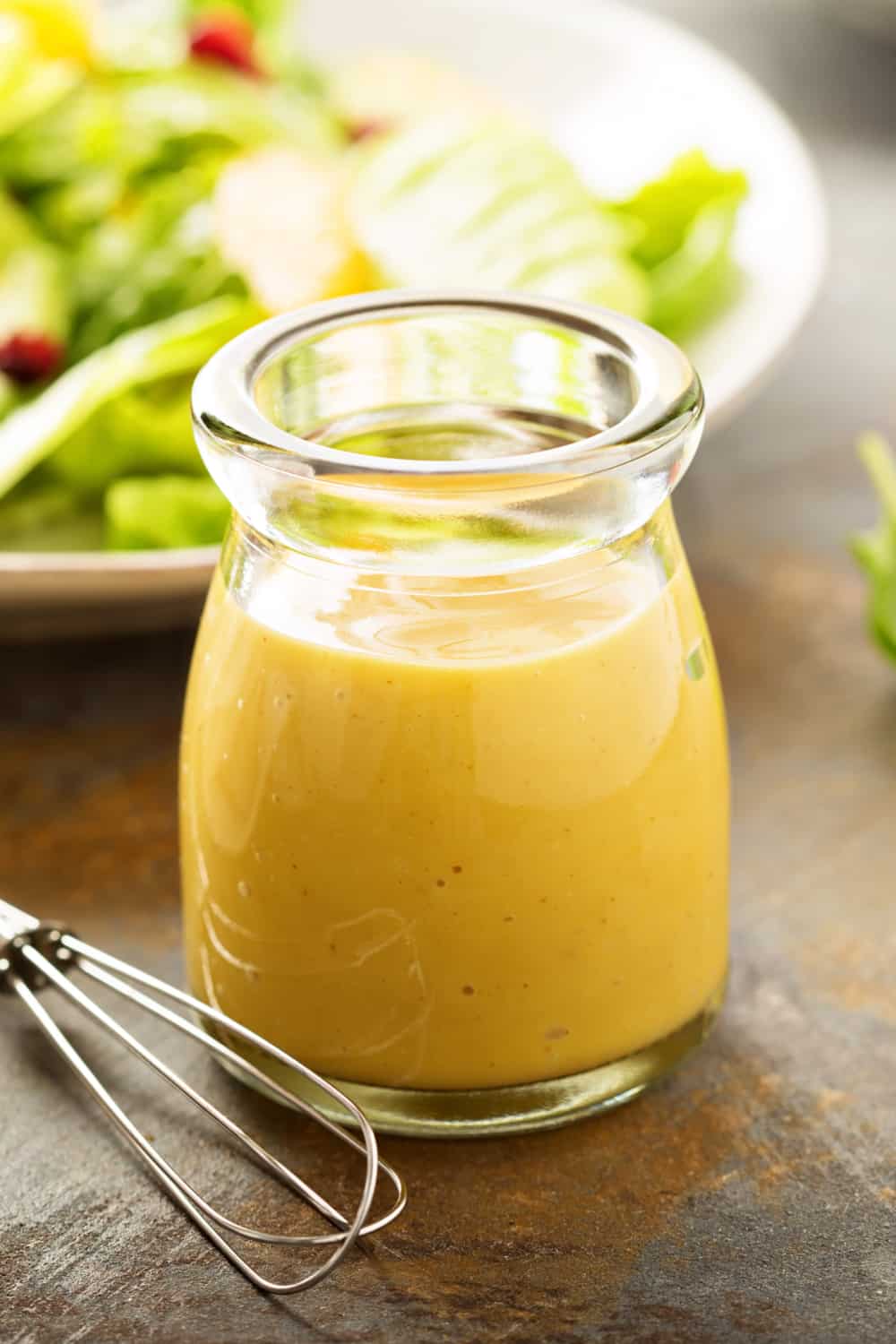
Many people can’t imagine eating a hot dog without mustard. Plus, it is an ingredient in many familiar dishes, such as steak, egg salads, walnut vinaigrette, and zucchini salad.
If you have some mustard in the fridge for as long as you can remember, you will inevitably wonder does mustard go bad. Let’s discover.
Table of Contents
Does Mustard Go Bad?
Mustard is a long-lasting food that almost doesn’t have an expiration date as long as you keep it unopened and properly stored. However, it will go bad if you contaminate it with other food or forget an opened bottle in a warm place.
If you examine mustard packaging, you will notice it has a best before date labeled instead of an expiration date. That way, a manufacturer provides a quality guarantee until a predefined date. Your mustard may not spoil past this day, but it won’t keep the same quality much longer after it.
How Long Does Mustard Last?

Nowadays, you can find many mustard types with different flavors on the market. Although recipes from various brands differ, mustard always contains variations of mustard seeds, vinegar, citric acid, and spices. Their common feature is that they can stay unopened in the pantry for a long time and still be safe to consume.
The reason the mustard has a long shelf-life is that vinegar and citric acid are natural preservatives. Both ingredients are regularly used for food preservation and canning. This high acid percentage prevents pathogenic bacteria development and product spoilage.
Still, you should transfer the mustard to the fridge as soon as you open it. The exception is dry mustard that you should always keep in a pantry or kitchen cabinet. The refrigerator’s low temperature and humidity can degrade its quality and change the texture.
Opened regular American mustard can last for up to 18 months in the fridge, while other types, such as Chinese or honey mustard, can remain edible for up to two years. The famous French Dijon lasts up to 12 months in the refrigerator.
Mustard shelf life |
||
| Mustard | Pantry | Fridge |
| Regular | 1 to 2 years | 12 to 18 months |
| Dijon | 2 to 3 years | 1 year |
| Honey | 2 to 3 years | 1 to 2 years |
| Homemade | 1 to 3 days | 2 to 8 weeks |
| Dry | 1 to 2 years | Unsafe |
If you prefer home-made mustard, you can quickly find tons of recipes online that you can quickly try at home. Keep in mind that freshly prepared mustard doesn’t contain additives that extend its shelf life. So, you can use it for a few days or store it in the fridge for a maximum of two months.
5 Tips to Tell If Mustard Has Gone Bad

You can determine if your mustard is spoiled regardless of the expiration date. All you need is to notice changes in its features.
Color
The first warning that mustard has gone bad is a significant color change. It is usual for a slightly darker layer to appear on the surface after a while. However, mustard that has become brown or extremely pale is not edible. That means some changes in its composition have occurred, most often due to bacteria growth.
Odor
If you feel a sour, rotten smell when opening the mustard package, you should immediately throw it away. Mustard has an intense, specific scent that is easily recognizable, and any odor change is a sign of spoilage.
Texture
As I have already mentioned, mustard’s separation or drying is not a sign that it is spoiled. Cracks on the mustard surface mean the quality has deteriorated so much that there is no point in saving it. If you stir the mustard and don’t get an acceptable result, you should buy a new pack.
Flavor
The change in the mustard taste is the final check. If you try it and feel a burning sensation on the tongue, extra bitterness or acidity, stop eating it. Such mustard is unsafe for consumption even if its other characteristics have remained unchanged.
Mold
Many people consume moldy food without any symptoms of poisoning, although it is highly unsafe. Be aware that any organic growth over the mustard surface indicates the bacteria’s presence.
It is not enough to throw away the moldy part and eat the rest. Once you notice black, green, or white mold, you should consider the product inedible.
5 Tips to Store Mustard
If you keep the mustard properly, it will last long enough to deplete it instead of being forced to throw it away.
Pick the right spot
Once you buy mustard, keep it in your pantry until the moment you want to use it. The best place is a dark, dry corner away from direct daylight and heat sources.
You can keep it in a kitchen cabinet, as well. The proper storing place is the one where you keep flour, spices, and other dry food. It is better to avoid sudden temperature changes and high humidity.
Seal tightly
Open mustard should be in the refrigerator between uses. Make sure to always close the jar tightly before putting it back in the fridge. The best option is to use an airtight container. That way, you will avoid the mustard absorbing the odor of other food stored in the fridge and reduce the bacteria growth.
Use clean utensils
The primary cause of mustard spoilage is contamination with other foods. Therefore, always use a clean scoop to place the desired amount on a plate. Never use your fingers or dip your food directly into the jar with the mustard. It is better to separate a small portion into a tray or shallow dish and then use it for dipping.
Stir it
Mustard can dry over time when stored in the fridge, which doesn’t mean it is spoiled. You can save it if you quickly stir it and add a little vinegar if necessary. Solve the liquid and dense parts separation by mixing it with a spoon until getting a creamy, homogeneous mixture.
Throw leftovers away
Never return the mustard residue from the plate back to the original packaging, as you risk spoiling the whole mass. It is better to sacrifice a small portion that remains after a meal than to contaminate the entire packaging.
The Risk of Consuming an Expired Mustard

The FDA classifies mustard as a GRAS (Generally Recognized as Safe) food. That means consuming mustard in a reasonable amount won’t cause health problems. Still, some people are allergic to mustard seeds. If you have this allergy, you may face severe symptoms, including nausea, vomiting, skin rash, swelling, and breathing problems.
Mustard has a long shelf life, and its quality declines when the date on the package passes. In most cases, expired mustard consumption has no consequences because it is safe to eat way past the best before date.
You can feel mild food poisoning symptoms such as diarrhea, nausea, and vomiting in the worst-case scenario. If the mustard has changed its characteristic appearance or smell, don’t eat it, and buy a new package.
Additionally, many alternative medicines use mustard as a cosmetic or medicament. You need to be careful when applying it to your skin since prolonged exposure to mustard can cause burns, blisters, and ulcers.
Can You Freeze Mustard?

Theoretically, freezing mustard doesn’t make much sense since you can buy it all year round, its price is affordable, and a shelf-life in the fridge or pantry is satisfying.
If you put a whole bottle of mustard in the freezer, its texture will change after thawing. The thick, sedimentary part will stick at the bottom of the bottle while the oil will remain on the surface. You can shake the bottle intensively for a few minutes to remix the ingredients, but the product quality will be permanently compromised.
Nevertheless, some women freeze small portions of mustard for practical reasons. It is much more comfortable to put a frozen cube of mustard in a blender for some complicated sauce than to pour a fresh, creamy dip with a spoon.
There are several ways to freeze small doses of mustard. For instance, you can take a baking paper sheet or aluminum foil and put a spoon or two mustard on it at equal intervals. Then, place it carefully in the freezer and wait for 2 to 3 hours.
Once the mustard portions are frozen, transfer them to an airtight container or zip lock bags to save space in the freezer. Alternatively, you can use a muffin mold, ice cube trays, or small cups for baby food for more practical storage.
Avoid defrosting mustard in the microwave. It is better to throw the cube into the dish you prepare or leave it in a container on the kitchen counter overnight. Otherwise, you can expect layer separation and spoiling.
Summary
Mustard is a long-lasting food that is safe to use even after the expiration date. You can keep it in the pantry or fridge, while freezing is a less common method of storing it. However, its quality will decline over time. There are several indicators that mustard has gone bad, so you should check it before use.